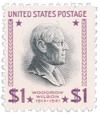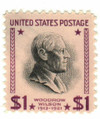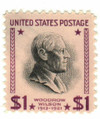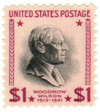
# 832c - 1954 $1 Woodrow Wilson, red violet and black
$1 Wilson
1938 Presidential Series
City: Washington, DC
Printed by: Bureau of Engraving and Printing
Printing Method: Dry printed from 400-subject flat plates on thick white paper with smooth, colorless gum.
Perforations: 11
Color: Red Violet and Black
President Wilson Sails to Europe
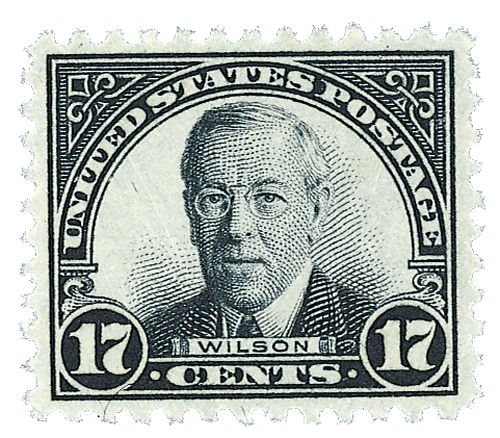
On December 4, 1918, President Woodrow Wilson boarded a boat to Paris, becoming the first siting president to travel to Europe. He spent six months in France for the World War I peace talks in Paris.
When war broke out in Europe in 1914, President Wilson declared neutrality and aimed to keep America out of the conflict. However, Germany began a program of unlimited submarine warfare, threatening US commercial shipping. Furthermore, in 1917 the British intercepted a telegram sent to the German ambassador in Mexico City promoting a Mexican attack on America. According to Wilson, the German government “means to stir up enemies against us at our very doors.”
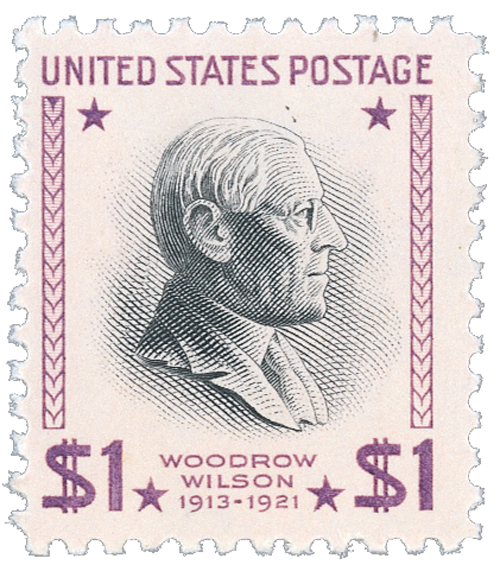
On April 2, 1917, President Wilson addressed Congress with a declaration of war, stating that the war overseas had become a threat to humanity. He believed that unless the US entered the war, Western civilization could be destroyed. He referred to it as a “war to end all wars” hoping it would result in lasting peace.
The following January, Wilson again addressed Congress, delivering his now-famous 14 Points speech, outlining America’s war goals. This speech marked the first clear intention of any of the warring nations. Its goals included self-determination, open agreements, international cooperation, resolving territorial disputes, creating lasting free trade and commerce, outlawing secret treaties, and establishing an independent Poland with sea access. It also suggested the creation of a peacemaking organization, which would eventually become the League of Nations.
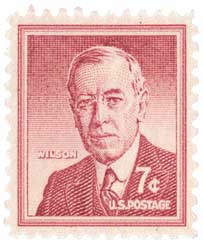
By November 1918, all of Germany’s allies had agreed to armistices, and German commanders realized that defeat was imminent. So on November 11, they agreed to an armistice as well, bringing an end to the fighting.
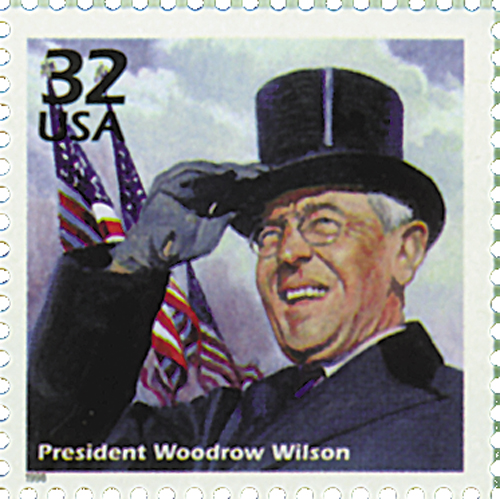
On December 4, 1918, President Wilson departed America aboard the George Washington to attend the peace talks in Paris. He became the first sitting US president to travel to Europe while in office. Wilson arrived in Brest, France, on December 13 and the Paris Peace Conference officially began on January 18, 1919. Wilson promoted his 14 Points, and while some saw his proposals as an outline for peace, he also faced opposition on some points.
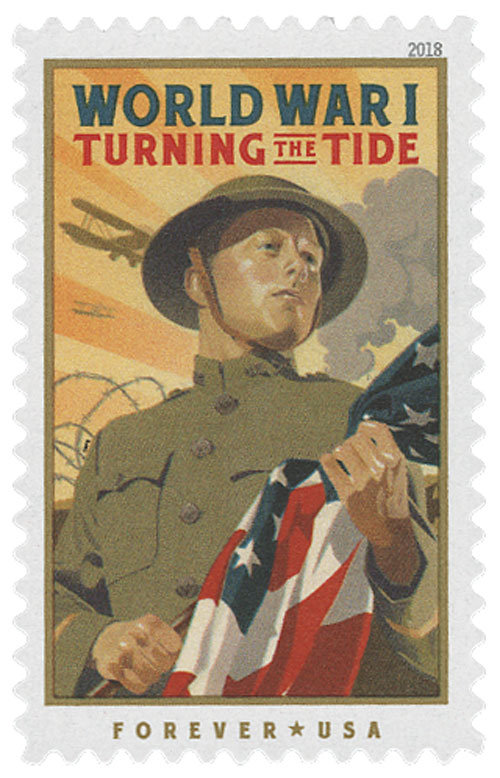
Over the first four weeks of the conference, Wilson managed to get support for several major issues and laid the groundwork for the League of Nations. He returned to the US for three weeks, during which time the conference struggled. In his absence, many of the agreements he secured were compromised and there were several amendments made to his League of Nations proposal.
Eventually, the Treaty of Versailles was signed, on June 28, 1919, ending the state of war between Germany and the Allies. Wilson received the Nobel Peace Prize for his work at the conference and returned home to get Senate approval. However, Americans and the Senate were divided on the treaty and the idea of the League of Nations. With the Senate split on the issue, Wilson set out on a cross-country speaking tour to get national support.
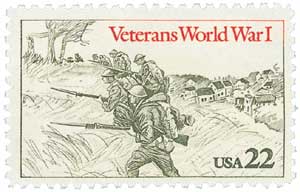
$1 Wilson
1938 Presidential Series
City: Washington, DC
Printed by: Bureau of Engraving and Printing
Printing Method: Dry printed from 400-subject flat plates on thick white paper with smooth, colorless gum.
Perforations: 11
Color: Red Violet and Black
President Wilson Sails to Europe

On December 4, 1918, President Woodrow Wilson boarded a boat to Paris, becoming the first siting president to travel to Europe. He spent six months in France for the World War I peace talks in Paris.
When war broke out in Europe in 1914, President Wilson declared neutrality and aimed to keep America out of the conflict. However, Germany began a program of unlimited submarine warfare, threatening US commercial shipping. Furthermore, in 1917 the British intercepted a telegram sent to the German ambassador in Mexico City promoting a Mexican attack on America. According to Wilson, the German government “means to stir up enemies against us at our very doors.”

On April 2, 1917, President Wilson addressed Congress with a declaration of war, stating that the war overseas had become a threat to humanity. He believed that unless the US entered the war, Western civilization could be destroyed. He referred to it as a “war to end all wars” hoping it would result in lasting peace.
The following January, Wilson again addressed Congress, delivering his now-famous 14 Points speech, outlining America’s war goals. This speech marked the first clear intention of any of the warring nations. Its goals included self-determination, open agreements, international cooperation, resolving territorial disputes, creating lasting free trade and commerce, outlawing secret treaties, and establishing an independent Poland with sea access. It also suggested the creation of a peacemaking organization, which would eventually become the League of Nations.

By November 1918, all of Germany’s allies had agreed to armistices, and German commanders realized that defeat was imminent. So on November 11, they agreed to an armistice as well, bringing an end to the fighting.

On December 4, 1918, President Wilson departed America aboard the George Washington to attend the peace talks in Paris. He became the first sitting US president to travel to Europe while in office. Wilson arrived in Brest, France, on December 13 and the Paris Peace Conference officially began on January 18, 1919. Wilson promoted his 14 Points, and while some saw his proposals as an outline for peace, he also faced opposition on some points.

Over the first four weeks of the conference, Wilson managed to get support for several major issues and laid the groundwork for the League of Nations. He returned to the US for three weeks, during which time the conference struggled. In his absence, many of the agreements he secured were compromised and there were several amendments made to his League of Nations proposal.
Eventually, the Treaty of Versailles was signed, on June 28, 1919, ending the state of war between Germany and the Allies. Wilson received the Nobel Peace Prize for his work at the conference and returned home to get Senate approval. However, Americans and the Senate were divided on the treaty and the idea of the League of Nations. With the Senate split on the issue, Wilson set out on a cross-country speaking tour to get national support.





